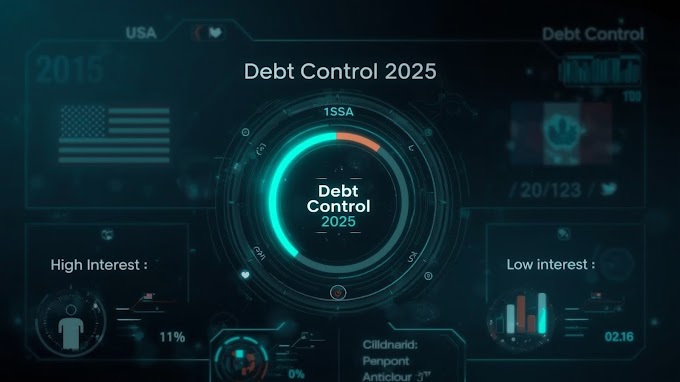Understanding Student Loan Repayment Plan Denials
You’ve done your research, filled out the paperwork, and applied for a new student loan repayment plan, hoping for a more manageable monthly payment. Then, the letter arrives: your application has been denied. It’s a frustrating and often confusing setback that leaves millions of Americans feeling trapped. This guide is here to demystify the process, providing an exhaustive analysis of why your plan might have been denied and offering clear, actionable steps you can take. Whether you have *federal student loans* with servicers like *MOHELA* or *Nelnet*, or *private student loans* from lenders like *Discover*, understanding the complex landscape is the first step toward a viable solution and eventual financial freedom.

The Architecture of Federal Student Loan Repayment
Understanding a denial requires a foundational knowledge of the intricate and often convoluted architecture of the U.S. federal student loan system. Borrowers face a variety of plans, each with distinct mechanics, eligibility criteria, and long-term financial consequences. These plans fall into two main categories: fixed-payment frameworks that prioritize a set repayment timeline, and income-driven frameworks that prioritize affordability.
Fixed-Payment and Time-Based Frameworks
- Standard Repayment Plan:
This is the default plan. It features fixed monthly payments (at least $50) over a loan term of up to 10 years (or 10-30 years for consolidation loans). It results in the lowest total interest paid but has the highest monthly payment.
- Graduated Repayment Plan:
Designed for those expecting income growth, this plan starts with lower payments that increase every two years over a 10- to 30-year term. While initially more affordable, it leads to higher total interest costs. Crucially, payments under this plan generally do not qualify for Public Service Loan Forgiveness (PSLF).
- Extended Repayment Plan:
To be eligible, a borrower must have more than $30,000 in federal student loan debt. This plan extends the repayment term to 25 years, significantly lowering monthly payments but dramatically increasing the total interest paid over the life of the loan. Like the Graduated Plan, it is generally not a qualifying plan for PSLF.
The Rise of Affordability: Income-Driven Repayment (IDR)
IDR plans represent a fundamental shift, calculating monthly payments as a percentage of a borrower's "discretionary income" — the difference between their adjusted gross income (AGI) and 150-225% of the federal poverty guideline for their family size. All IDR plans offer potential loan forgiveness after 20-25 years of payments and require annual income recertification.
- Income-Based Repayment (IBR):
Payments are 10-15% of discretionary income, capped at the 10-year Standard Plan amount. It was historically limited to those demonstrating a "partial financial hardship," a requirement now removed by recent legislation.
- Pay As You Earn (PAYE):
More generous than IBR, PAYE capped payments at 10% of discretionary income. However, it had strict "new borrower" rules and, as of mid-2024, is no longer available for new enrollments.
- Income-Contingent Repayment (ICR):
The oldest and typically most expensive IDR plan. Its primary modern function is being the *only* IDR option for Parent PLUS Loans, which must first be consolidated. New enrollments are now restricted for most borrowers.
A Taxonomy of Denial: Why Applications Fail

A denial is not a single event but a spectrum of issues ranging from simple borrower error to deep systemic flaws. Understanding the specific reason is key to finding a solution.
Foundational Ineligibility
- Non-Qualifying Loan Types:
This is a primary reason for denial. For example, applying for IBR with a Parent PLUS loan, or for PAYE with an older FFEL Program loan, will result in automatic rejection.
- Borrower Status Issues:
A borrower in default on a federal student loan is ineligible for any new repayment plan until the default is cured through rehabilitation or consolidation.
Procedural Pitfalls and Servicer Errors
- Application and Documentation Errors:
A forgotten signature, a typo, or failure to include required proof of income can lead to denial. Using the IRS Data Retrieval Tool on StudentAid.gov can help prevent income documentation errors.
- The Annual Recertification Trap:
Missing the yearly deadline to recertify your income for an IDR plan is a "shadow denial." You aren't formally rejected, but your payments can skyrocket to the Standard Plan amount, and unpaid interest may be capitalized.
Denial of Forgiveness: The Ultimate Setback
Perhaps the most painful denial is for loan forgiveness after years of payments. For Public Service Loan Forgiveness (PSLF), a borrower must make 120 qualifying payments under a qualifying repayment plan. A borrower who spends a decade making payments under a non-qualifying plan, like the Extended or Graduated plan, will have their PSLF application denied.
Illustrative breakdown of common denial reasons.
The Current Crisis: The Collapse of SAVE and a New System
The federal student loan system is in a state of unprecedented turmoil. The most affordable plan ever created, the Saving on a Valuable Education (SAVE) Plan, was invalidated by federal courts in mid-2024. This action, followed by new legislation, has paralyzed the entire IDR application system. The Department of Education was forced to deny approximately 460,000 pending IDR applications and halt processing for nearly two million more. The 8 million borrowers already enrolled in SAVE were placed in administrative forbearance, but the crucial interest subsidy that prevented their balances from growing was terminated. This has created a "lost time" cohort of borrowers whose progress toward forgiveness has been unjustly halted.
Avenues for Recourse and Redress
First Line of Defense: Temporary Relief
For borrowers facing immediate financial distress, especially during the current IDR application freeze, deferment and forbearance can temporarily pause payments to avoid default.
Escalation Pathways for Systemic Failures
When your servicer is the problem, you can escalate the issue to a third-party oversight body like the FSA Ombudsman Group or the Consumer Financial Protection Bureau (CFPB).
A Quick Guide to Denial
Tap through this quick story for the key takeaways on handling a repayment plan denial.
.png)
.png)

.png)
.png)





Hi Please, Do not Spam in Comments